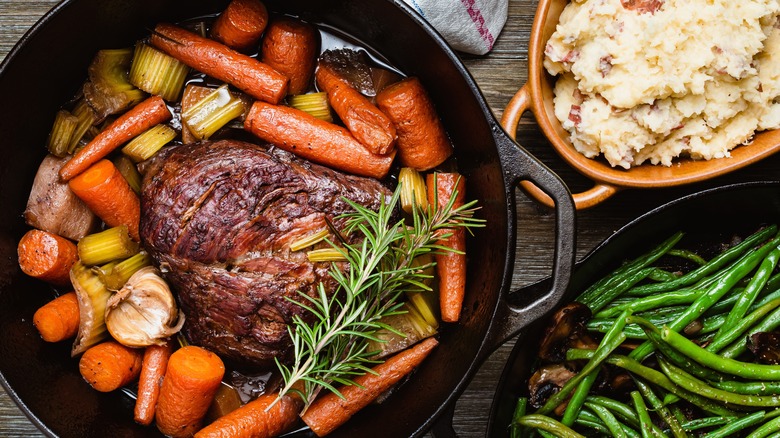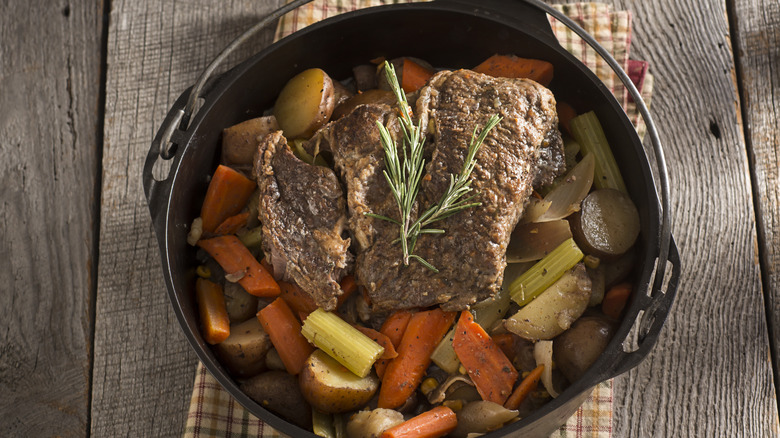Why Too Much Liquid Is A Huge Mistake When Cooking Pot Roast
Pot roast, that American classic braised beef recipe, uses kitchen science to turn a tough, less expensive cut of meat into a fork-tender satisfying and homey meal. Over the span of an hour or two, low temperature and a moist environment cause tough cartilage in the meat to melt into gelatin, and the muscle relaxes into its soft texture. All this magic happens relatively hands-off in your Dutch oven or slow cooker — your only task is to get the amount of liquid in the simmering pot right.
A pot roast only needs a small amount of liquid added to the pot, especially if you are using a slow cooker or instant pot with a tight lid that doesn't allow for evaporation. After you sear the meat to brown it, the modest amount of liquid used to deglaze the pot will likely be just enough for the braise. A good rule of thumb is to add any additional liquid just up to the midway mark on the beef roast.
Savor the pot roast's natural sauce
The dissolving gelatin and juices from the meat are what make the pot roast sauce so delicious, and too much liquid at the start means a diluted sauce with less silky mouthfeel and rich flavor. Remember that the meat and any veggies in the pot will also add to the liquid volume. Carrots and potatoes are not high in water content, but onions, celery, tomatoes, and mushrooms are juicy and will end up contributing a lot of moisture.
There's one more reason to limit the liquid: Cooking the beef partially above the level of the pot liquid also allows that portion of the meat to brown more, and browning is flavor! If you keep the meat completely submerged, it won't have a chance to gain that extra bit of Maillard reaction that is so important for a deep umami taste. So, remember to use a light hand with the braising liquid to get a fully flavored sauce that might just be the star of your plate.

